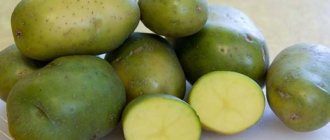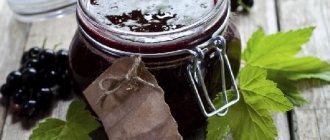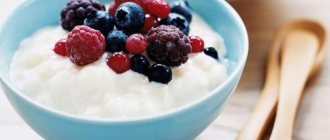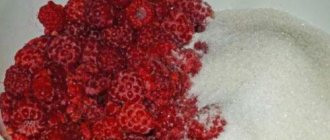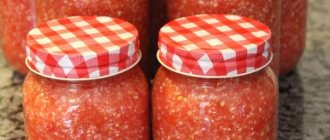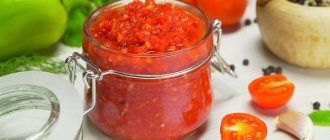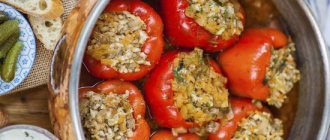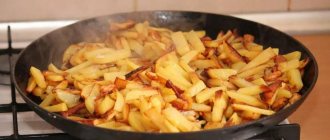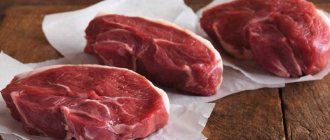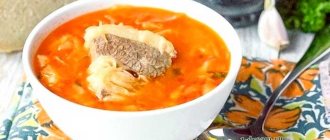Rice is a very healthy cereal crop. Nowadays, in the average person’s diet, rice is often found as a side dish for dishes. The product is universal in cooking: you can use it to make porridge, pudding, casserole, or add it to the filling of pies. Eating it is healthy, because approximately 78 percent of its composition is complex carbohydrates. The product also contains many proteins and B vitamins. It is easily digestible and does not lose its beneficial properties when cooked. And rice is simply very tasty, anti-allergenic and low in calories.
Long rice
You can find different varieties of rice in stores. Some are suitable for soups, some for porridges, some are best used only for pilaf. It is usually prepared in the most basic way - boiling. The packages sometimes describe in detail how long it takes to boil a particular grain, whether soaking or any additional heat treatment is necessary. Do you need to rinse rice? Of course it is necessary. Like any other cereal crop, rice needs to be thoroughly washed before processing.
When to rinse rice
When should you rinse rice? And is it necessary to rinse rice before cooking?
In most cases, yes. Rice is washed before cooking to prevent it from sticking together during cooking. Why does “gluing” happen? Cereals contain so-called “rice dust” - amylopectin, a type of starch. Not a single grain is usually complete without such a “coating”. And this can only be removed by washing.
Rice is not washed except to prepare a dish called “risotto”. It requires the manifestation of this “sticky effect”, and there is no need to remove the starch layer from the grains.
Some people are unaware that this product has “sticky properties” and still rinse it before cooking. This is usually done based on the fact that the grains in the package are not so clean. And there is some truth in this.
Some people pour a stream of cold water over the rice after cooking. Do I need to rinse rice with cold water after cooking? This probably depends on the type of rice. For example, long (but not thin) rice should be rinsed with cold water after cooking. Round and short rice is usually not washed - it is usually used to prepare porridges and fillings for pies, so special friability is not required. And the small transparent ones are not washed at all.
When deciding to wash rice, it is important to pay special attention to its variety. With a variety, you can look at the country of origin - in order to logically understand whether chemical growth accelerators for cereals are used in production. Chemical residues are strongly deposited in the starch layer of grains and should be eliminated even if they do not cause serious harm to the health of the human body.
Rice needs to be washed in a bowl
Parboiled rice
Parboiled rice is rice that has been steamed in production. It cooks faster, is tastier and healthier than its unprocessed counterpart, and does not taste bitter. They say that it does not even stick together when cooked, which, of course, also encourages buyers to purchase such a product. Then is it necessary to rinse the parboiled rice?
Usually, washing to eliminate the “stickiness” of steamed rice is not required - there is usually no starchy coating on it or there is too little present to stick at least a couple of grains together. They usually wash it only in order to remove all the production debris that got inside the pack. Also, some varieties are grown using strong chemical fertilizers, and it is worth washing the cereal to get rid of residual chemical dust. It, of course, will not greatly affect the consumer’s well-being, but , like any other chemical, will not have a particularly positive effect.
Thus, from a technical point of view, there is no need to rinse such a product. And from a hygienic point of view - very much so. In order to easily prepare steamed rice cereal, you need to soak it for a while or fry it in vegetable oil for about 10-20 minutes. Soaking, by the way, usually also helps to get rid of residual dust and starch. The finished dish will not lose its taste and will not stick together. But whether it will be clean is another question.
Do you need to rinse steamed rice before cooking? Perhaps, it is precisely before cooking that rinsing is required. After cooking, the grains are usually sufficiently elastic and crumbly to eliminate the need to cool them and rinse them with cold water. And before you throw the cereal into the pan, it will be just right to spray it with a stream of cold water a couple of times for hygienic purposes. However, as already mentioned, you can replace the washing procedure with a soaking procedure. The duration, thoroughness and temperature of the water for washing the rice will depend on its shape and variety. For example, some types of rice should be doused with boiling water several times to ensure perfect fluffiness.
How to soak properly
Water temperature and soaking time depend on the chemical and physical properties of the cereal variety.
Short round grain. Soft and contains a lot of starch. Therefore, it does not require long soaking.
- Check for foreign matter.
- Pour hot (approximately 60 °C) water for 15 minutes.
- Drain and proceed to rinsing.
Long grain fine translucent . Very dense. It needs to be soaked longer than soft varieties.
- Go through.
- Rinse.
- Soak in cold salted water for 5-8 hours.
Wild brown/black . The grains are dense. Cooking without prolonged soaking is not recommended.
- Remove trash.
- Rinse.
- Soak in cold salted liquid for 6-8 hours. 1 tablespoon of salt per 3 liters is enough. This volume is enough to soak a whole kilogram. At this stage, the rice cannot be over-salted - it will absorb exactly as much salt as necessary.
Basmati . Contains a lot of starch and has soft grains. Does not require long soaking.
- Remove foreign debris from the cereal.
- Rinse.
- Pour warm (slightly above room temperature) water for 10-15 minutes.
Alanga . Soft, so soaking is often excluded. After checking for foreign impurities, they immediately begin the washing stage.
Parboiled long grain rice (white) . The grains are treated with steam under pressure. Because of this, it becomes harder. This variety requires longer soaking than the round grain variety.
- Remove all foreign impurities (sort out).
- Rinse.
- Soak in cold salted liquid for 1-2 hours.
Any variety is soaked only in the cleanest and highest quality water. After all, it absorbs any liquid it finds itself in, which means the final taste of the dish depends on it.
Do you need to rinse red rice?
Red rice is a healthy and tasty variety of a common cereal product that is becoming increasingly popular in the modern world - it is pleasant to look at, looks good on a plate and contains a lot of useful substances. It is red because it contains substances called anthocyanins. They are natural antioxidants; when cooked, they color the water (just as, for example, happens when beets are cooked). Red cereal is used for side dishes, soups, salads and hot dishes - in general, its “functionality” is no less than that of the usual white rice.
If you throw it into water without rinsing, the latter will not turn red, but will become very cloudy. This will mean that there is a starchy coating on it - just like any other rice product. It will cause the rice to stick together as it cooks. So should you rinse rice? Of course.
Red rice is rinsed with cold water until the rinsing water remains completely clear. After rinsing, place it in a colander or sieve and shake thoroughly a couple of times. Once the rice is cooked, there is no need to rinse it.
Round rice
What to do with Indian rice?
Is it necessary to wash basmati rice and, if so, when is the best time to do it?
Basmati rice is an Indian type of rice. It is the most expensive of all in the world. The grains of this cereal are very long; when cooked, the product is hard and dry.
In order to prepare this delight, you must follow certain cooking rules. The procedure includes soaking, separate cooking time, and portions. There are also rules regarding washing.
Wash basmati rice in cold water before cooking. There is no need to repeat the rinsing until the water is absolutely clean - just thoroughly rinse it once with water in a colander, and then shake it well a couple of times. After water procedures, Indian cereal is usually dried.
It is extremely important to rinse with cold water. Warm or hot will have a thermal effect on the grains, and this will greatly disrupt the process of proper preparation of such an expensive pleasure. In addition to rinsing, basmati needs a short soaking with constant stirring.
A single mistake in interaction with water can add excess moisture to the product and spoil its taste. You need to act carefully.
Delicious pilaf recipe from the chef
✍ Ingredients:
- 500 g meat (lamb or pork)
- 500 g onions
- 500 g carrots
- 1 tbsp. rice
- 300 g vegetable oil
- 5-7 cloves of garlic
- spice mixture for pilaf
- salt
Preparation:
- Cut the carrots into thin strips. Onion - in half rings. Meat - medium pieces.
- Prepare zirvak. To do this, heat the vegetable oil in a cauldron. Add carrots, onions, meat. Fry, uncovered, for 10 minutes. Next - another 10 minutes under the lid. Maintain the fire at maximum. Stir the mixture periodically.
- In the middle of preparing zirvak, add salt and spices to taste. If there is no special mixture of spices, the following will do: barberry, basil, cumin, hops-suneli, coriander.
- Place the prepared (washed and soaked) cereal on top of the zirvak. Spread evenly over the surface and add hot water. Do not stir. Cover with a lid and immediately reduce heat to low. Leave to cook for about 1 hour.
- 5 minutes before the end of cooking, insert the peeled garlic cloves.
It tastes best if, after cooking, wrap the pan in a blanket and leave to steam for about 30 minutes.
If brown rice is used, is washing also necessary?
Brown rice is a grain that has tougher grains. They are tough due to the shell, which contains many additional nutrients. It is thanks to its shell that rice got its name. This variety is especially revered in the east, but gourmets prepare it for everyday use as a side dish for all sorts of delicious dishes. Rice is in a shell, so its processing is more complicated than standard cooking. It is necessary to ensure that the “crust” does not interfere and is not too hard to eat. So should you rinse brown rice?
Definitely necessary. Brown rice is washed in a colander or sieve, this is done using cold running water. This is done exactly until the flowing streams become completely transparent. From time to time you need to shake off the cereal.
Immediately after washing, brown rice grains must be doused with boiling water. This will create a temperature contrast that will soften the shell of the grains, and the rice will be ready for soaking. Soaking such rice takes longer, and to some extent also performs a cleansing function.
Is it necessary to wash jasmine rice?
What temperature should the water be for washing this rice? Jasmine rice is a distinct variety of long grain rice. It is grown in Thailand, and is extremely similar in appearance to the basmati variety (which is also long-grain). However, this rice cereal has unique beneficial substances and is easier to prepare than its expensive Indian counterpart.
Whether it is necessary to wash jasmine rice is a more pressing question than ever. The answer is clear, clear and constant - yes. Like any other variety of rice, it needs to be washed with cold water. On it, like on any other, there is an adhesive layer of starch, and it will definitely show its properties during the boiling process. So this kind of rice needs washing, and it is washed before cooking. This is done with cold running water in a colander. Water procedures for this cereal continue until the streams begin to come out as transparent as they fall into a colander.
Treatment with boiling water and rinsing after cooking is not required - it will be quite crumbly without it. Otherwise, the cooking process is no more complicated than the standard one. For the correct cooking procedure, soaking for technical purposes will be required.
We prepare the most delicious and satisfying pilaf
Basmati rice is an ideal product for preparing such an oriental dish as pilaf. To make it tasty, aromatic and as crumbly as possible, you should prepare the following components in advance:
- long grain basmati rice – 1.5 grains. glasses;
- lamb or beef pulp with fatty layers - about 400 g;
- fresh large carrots – 3 pcs.;
- garlic - large head;
- bitter white onions – 2 heads;
- vegetable oil – add as desired;
- salt and seasonings intended specifically for pilaf - add to taste.
